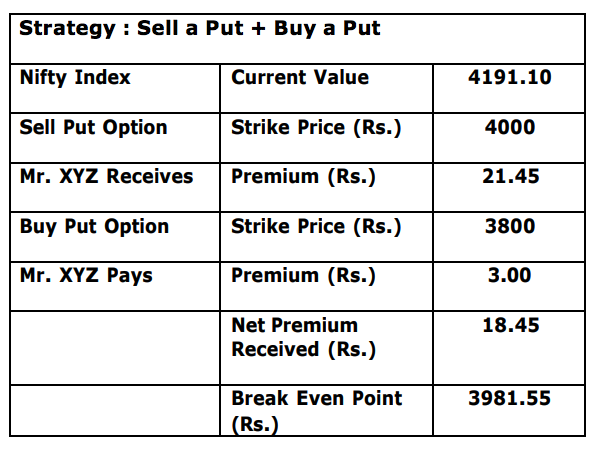A bull put spread can be profitable when the stock / index is either range bound or rising. The concept is to protect the downside of a Put sold by buying a lower strike Put, which acts as an insurance for the Put sold. The lower strike Put purchased is further OTM than the higher strike Put sold ensuring that the investor receives a net credit, because the Put purchased (further OTM) is cheaper than the Put sold. This strategy is equivalent to the Bull Call Spread but is done to earn a net credit (premium) and collect an income.
If the stock / index rises, both Puts expire worthless and the investor can retain the Premium. If the stock / index falls, then the investor’s breakeven is the higher strike less the net credit received. Provided the stock remains above that level, the investor makes a profit. Otherwise he could make a loss. The maximum loss is the difference in strikes less the net credit received. This strategy should be adopted when the stock / index trend is upward or range bound. Let us understand this with an example.
When to Use: When the investor is moderately bullish.
Risk: Limited. Maximum loss occurs where the underlying falls to the level of the lower strike or below
Reward: Limited to the net premium credit. Maximum profit occurs where underlying rises to the level of the higher strike or above.
Breakeven: Strike Price of Short Put – Net Premium Received
Example: Mr. XYZ sells a Nifty Put option with a strike price of Rs. 4000 at a premium of Rs. 21.45 and buys a further OTM Nifty Put option with a strike price Rs. 3800 at a premium of Rs. 3.00 when the current Nifty is at 4191.10, with both options expiring on 31st July.


The strategy earns a net income for the investor as well as limits the downside risk of a Put sold.
